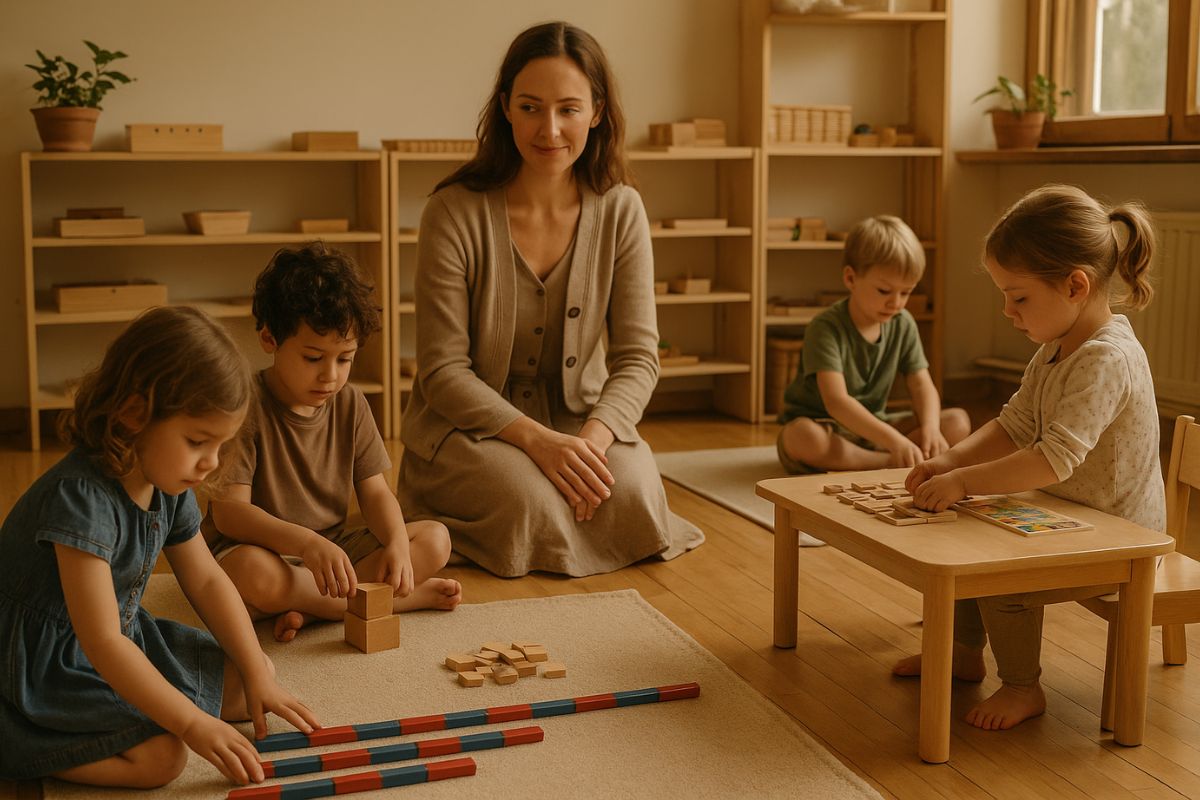Children are naturally curious, and Montessori education is built to nurture that curiosity. Instead of giving them answers, it gives them the space to think. In a Montessori classroom, problem solving is more than a skill—it’s part of daily life. And for many parents and educators, it’s one of the biggest reasons they love the method. Encouraging problem solving doesn’t require high-pressure situations or tricky puzzles. It happens through quiet observation, hands-on materials, and trust in the child’s ability.
When children are allowed to solve problems on their own, they gain confidence, patience, and creativity. That kind of learning stays with them far beyond the classroom. Whether it’s figuring out how to pour water without spilling or navigating a disagreement with a classmate, these small moments build habits that last a lifetime.
Montessori Encourages Thinking Through Doing
One thing that stands out in Montessori classrooms is how much freedom children have to make choices. These choices often come with natural challenges. A child might choose a material they’ve never used before, and instead of asking for help right away, they’ll try to figure it out themselves. The guide doesn’t interrupt unless the child truly needs support. This way, the child gets the satisfaction of solving the problem on their own.
This kind of thinking through doing is everywhere in a Montessori environment. The materials are designed with control of error, meaning the child can spot a mistake without an adult stepping in. Whether it’s a puzzle piece that doesn’t fit or a math material arranged in the wrong order, they see what went wrong and try again. That cycle of action, reflection, and correction teaches resilience.
Social Problem Solving Builds Emotional Strength
Montessori doesn’t just focus on individual tasks—it also supports community learning. Social conflict is a natural part of childhood. Instead of punishing or avoiding it, guides help children learn how to solve problems peacefully. For example, children might use a peace table to talk through disagreements, taking turns to speak and listen.
This teaches them more than just getting along. It shows them that problems can be worked through calmly and respectfully. These early lessons in communication, empathy, and compromise form a strong foundation for future relationships.
The Guide’s Role Is To Step Back, Not Step Away
One of the biggest differences in Montessori classrooms is how the adult interacts with the child. Instead of leading the learning, the guide observes carefully, stepping in only when needed. That means allowing a child time to figure something out—even if it means watching them struggle a bit. This patience from the adult gives the child the message: “You can do this.”
When a guide does offer help, it’s often a suggestion, not a directive. They might ask, “What do you notice here?” or “What could you try next?” These questions invite the child to think, rather than rely on the adult for a solution. It’s a gentle way of guiding without taking over.
Everyday Tasks Become Opportunities
Problem solving isn’t limited to math or science. In Montessori, it’s woven into daily routines. Tying shoelaces, preparing snacks, cleaning up a spill—each of these tasks invites a child to think, make choices, and adjust as needed. These tasks aren’t seen as chores. They’re treated as meaningful work, just as important as reading or counting.
When a child has a sense of ownership over their environment, they take more responsibility. If a glass breaks, they know where the broom is. If a tray is missing something, they go find it. These small actions build independence, but they also teach that solving problems is part of being a community member.
Encouraging Without Pushing
Sometimes, adults rush to solve problems for children out of kindness. But in Montessori, waiting a few extra moments can make a big difference. Children who are given time and trust often surprise us with their solutions.
Encouragement in Montessori is quiet and thoughtful. Instead of praising the result, guides might comment on the effort: “You really stayed focused,” or “You tried a new way.” This shifts the focus from approval to internal satisfaction. The child learns to value the process, not just the outcome.
Problem Solving Looks Different at Every Age
Montessori classrooms are prepared to meet the needs of different developmental stages. A toddler might face the challenge of putting on their shoes, while a six-year-old might work through a long division problem. The environment grows with the child, offering new challenges as they’re ready.
Even the structure of the classroom supports problem solving. Mixed-age groups allow younger children to observe older ones, and older children have a chance to mentor. These moments of shared learning often lead to spontaneous problem solving, with children learning from one another in a natural way.
A Skill That Grows Over Time
Problem solving in Montessori isn’t about rushing to get the right answer. It’s about building habits of mind—persistence, curiosity, flexibility. These habits grow slowly and quietly, nurtured by a thoughtful environment and a respectful guide.
Over time, children begin to see themselves as capable. They face challenges not with fear, but with interest. They learn that it’s okay to make mistakes and try again. And they carry that mindset with them into school, work, and life.
Encouragement Begins With Trust
Encouraging problem solving starts with believing that children can do hard things. It means letting them make decisions, take small risks, and figure things out in their own way. It’s not always easy for adults to step back, but the rewards are worth it.
In Montessori classrooms, children learn to trust themselves because the adults trust them first. They grow up knowing that problems are not something to fear, but something to face—with thought, care, and confidence.
